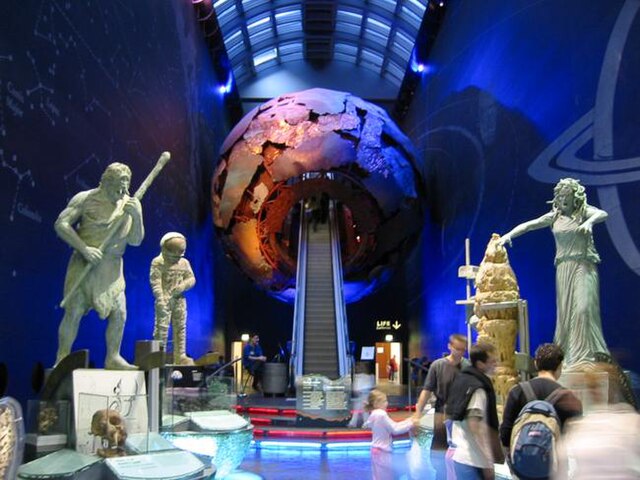The Geological Museum, started in 1835 as one of the oldest single science museums in the world and now part of the Natural History Museum in London. It transferred from Jermyn Street to Exhibition Road, South Kensington in 1935 in a building designed by Sir Richard Allison and John Hatton Markham of the Office of Works.
The building of the Geological Museum from 1935, designed by Sir Richard Allison and John Hatton Markham
The atrium of the Geological Museum as it appeared until 2014
Folded gneiss from Loch Duich, Lasting Impressions gallery, Natural History Museum, London
The spinning globe in 1996
Natural History Museum, London
The Natural History Museum in London is a museum that exhibits a vast range of specimens from various segments of natural history. It is one of three major museums on Exhibition Road in South Kensington, the others being the Science Museum and the Victoria and Albert Museum. The Natural History Museum's main frontage, however, is on Cromwell Road.
Front façade of the museum in January 2006
An 1881 plan showing the original arrangement of the museum. (Link to current floor plans).
The Natural History Museum, shown in wide-angle view here, has an ornate terracotta facade by Gibbs and Canning typical of high Victorian architecture. The terracotta mouldings represent the past and present diversity of nature.
The Comic News reporting on the movement to South Kensington in 1863







